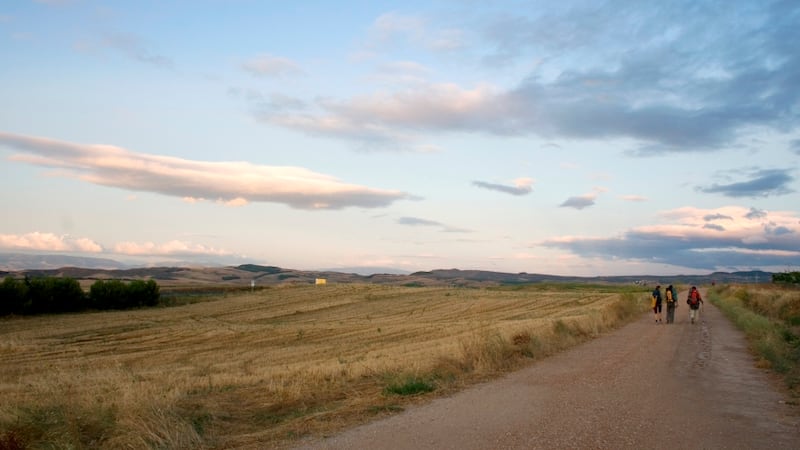Why is it that almost every second outdoor enthusiast we meet these days seems to be either heading for, or has just returned from, the Camino de Santiago? Can it be that the pilgrimage serves as a metaphor for life’s bewildering voyage? Are our lives more understandable when seen through the prism of a penitential journey? Certainly, a characteristic of many ages has been a compulsion to seek deeper meaning by travelling to some sacred place our forefathers vested with special redemptive powers.
The Middle Ages were the glory years of mass pilgrimage and medieval penitents certainly needed this compulsion in spades to complete the great penitential paths at a time when mechanised transport had yet to kill our concept of distance. Nevertheless, these early wanderers found the motivation and not inconsiderable courage to foot the great redemptive trails to Rome, Palestine, Canterbury, Lough Derg and Santiago de Compostela, along with many lesser-known sites.
These arduous excursions into what must then have been a scarily unknown world have long fascinated me. They were undertaken without the unquestioned 21st-century prerequisites of travel insurance, medicare, Goretex-outerwear and satellite images. Strangers journeying strange lands, these pilgrims would have been out of contact for up to a year and mostly travelling through areas where people spoke indecipherable tongues. And when they finally arrived at their sacred destination and gained their indulgences, they didn’t just hop on a low-cost airline for the return journey – they were obliged arduously to retrace every outward step.

The beginning of the end for medieval pilgrimage finally came when the Reformation ended forever the monolithic authority of the pope. Reformers such as Luther took an unaccountably dim view of pilgrimage and by opposing the very idea of gaining forgiveness from a walk of atonement, did much to lessen faith-based journeys. Ironically, however, it was the destabilising effect of religious conflict that finally overwhelmed the pilgrim ideal, with the sectarian wars that followed the Reformation leading to the virtual elimination of the trans-national spiritual journey.
It is sometimes said that the past never completely dies, but sooner or later comes back to revisit us. So the 21st century has been notable for a movement away from worship of conspicuous consumption towards heeding the ageless siren call of the long walk to a place of sanctity. In recent years large numbers of otherwise staunchly secularist people have come down with pilgrim trail fever. For these individuals, the journey has now become the objective with the sought after personal renewal, seeming to come not from the destination but from the walk itself.
These 21st century pilgrims almost invariably head for Spain to journey along the Camino of St James seeking a personal version of spiritual understanding in following paths carved out by the feet of medieval penitents heading to Santiago de Compostella.
Irish pilgrim routes
Few consider Ireland as an alternate destination although we have a robust pilgrim tradition. Clonmacnoise was one of Europe’s first pilgrim destinations, while abundant medieval penitents journeyed to Lough Derg, Holycross, Glendalough, Skellig Michael and Croagh Patrick. Yet, despite this past popularity, Ireland’s sacred trails were for generations almost totally forgotten. A re-awakening took place recently, however, when Pilgrim Paths Ireland was formed by representatives of Ireland’s principal pilgrim routes. The organisation’s first venture, in conjunction with the Heritage Council, was National Pilgrim Paths Day, 2014. Conceived as a unifying event, emphasising Ireland’s common Christian inheritance, the invitation to rediscover our pilgrim paths greatly exceeded expectations with 1,800 people walking 11 of our mystical trails. This year’s Pilgrim Paths Day is tomorrow, April 4th, and there’s a wider choice of walks on offer.
Organised by rural communities drawing on seemingly limitless resources of volunteer effort, the idea is to welcome all religious persuasions – as well as non-believers – and in doing so to raise awareness of Ireland’s unified Christian past.
So tomorrow, why not take a break from the stressful clutter of modern living by answering the ageless call to our pilgrim paths on one of 13 walks on offer nationwide? For information on today’s events see pilgrimpath.ie









